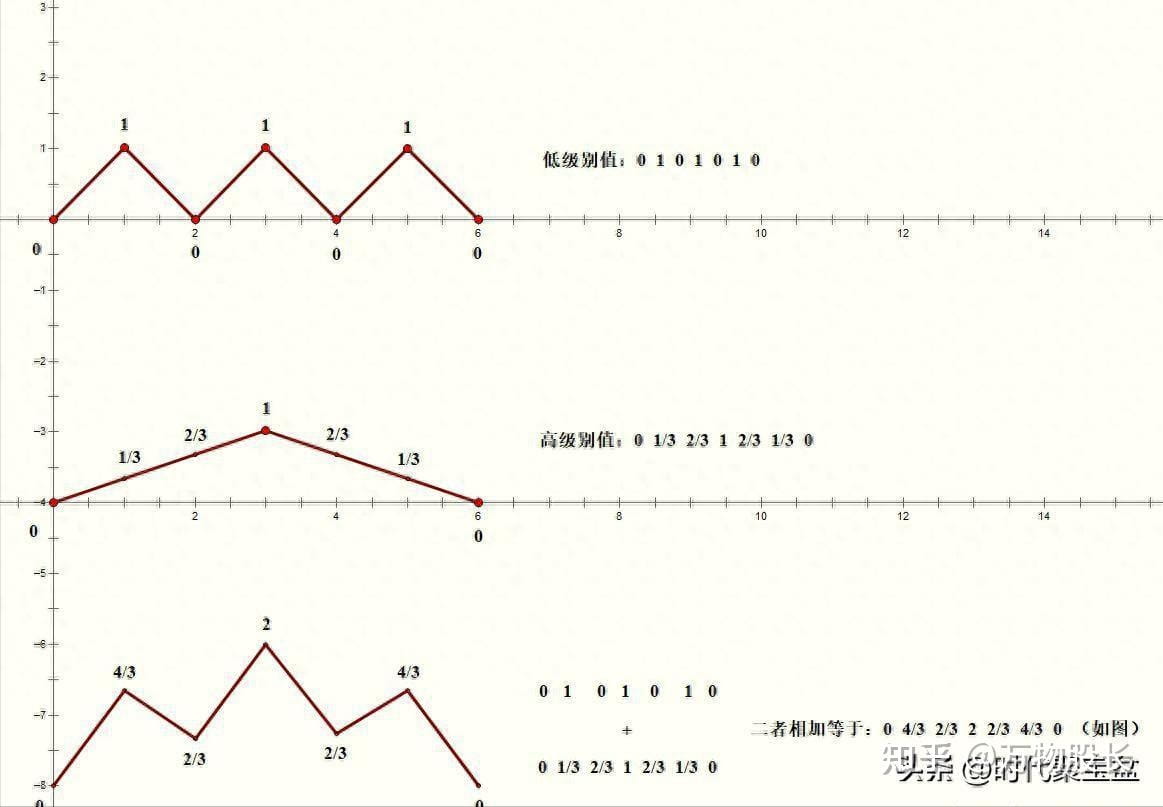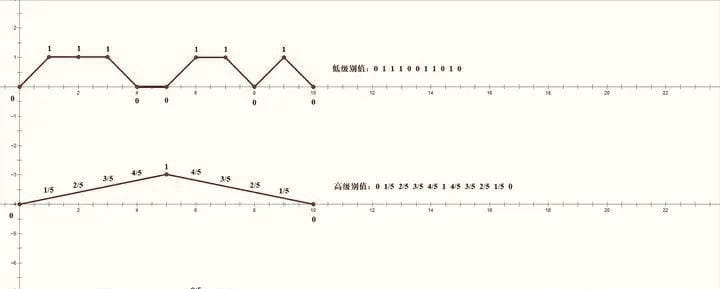The relationship of different levels of K lines is actually like 'magnifying glasses of different multiples'— larger levels look at the whole, while smaller levels look at the details. For example, the daily line is 'looking at the entire forest', the 60-minute line is 'looking at a big tree', the 15-minute line is 'looking at branches', and the 1-minute line is 'looking at leaves'. Leaves may shake, branches may sway, but a big tree will not easily fall, and the forest will not suddenly disappear.
The relationship of different levels of K lines is actually like 'magnifying glasses of different multiples'— larger levels look at the whole, while smaller levels look at the details. For example, the daily line is 'looking at the entire forest', the 60-minute line is 'looking at a big tree', the 15-minute line is 'looking at branches', and the 1-minute line is 'looking at leaves'. Leaves may shake, branches may sway, but a big tree will not easily fall, and the forest will not suddenly disappear.
First, the core of level relationships: the higher level sets the direction, while the lower level follows the fluctuations.
The essence of K-lines at all levels is 'the same trend presented in different time dimensions'. For example, if a stock is rising at the daily line level (overall going up), it may have pullbacks at the 60-minute and 15-minute levels (short-term going down), but ultimately it will follow the big direction of the daily line.
The opportunity for buying low has arrived; friends who are familiar with me know that I always emphasize that each market adjustment and decline is an opportunity to buy low. For example, I mentioned Nanfang Road Machine on July 25, which was entered during the market adjustment and resulted in a 70% return. Even during the big drop at the end of July, I still had a positive outlook, which allowed everyone to buy low into Zhejiang Dongri, leading to an explosion and a 107% gain in the first few days of August. The recent low buys in Jingwang Electronics have also led to consecutive gains, which proves my strength. As for others, I won't list them all.
The daily moving average shows a bullish pattern.
3. After the market adjusts, technically there is an arc-shaped bottom, and the main control is good; this is something I have been paying close attention to recently. Once the accumulation is complete, it will start to explode. Now is also the best time to arrange.
To avoid affecting the main control of the market, fans who want to keep up with the pace, search for 'Nanquan Wild Cat' on WeChat and add 'Zhihu'! If you want to go fast, go alone; if you want to go far, go together. I also understand the difficulties of small investors, so I am willing to move forward with everyone!

 For example:
For example:
The daily gold cross (overall upward trend), but the 15-minute dead cross (short-term pullback): this is a 'rest in the upward trend', just like a person breathing while running, after catching their breath, they continue to run.
The daily line dead cross (overall downward trend), but the 15-minute golden cross (short-term rebound): this is a 'rebound in the downward trend', just like a ball bounces after hitting the ground, but ultimately it will still land.
Remember: the higher level (daily line, 60 minutes) is the 'main trend', while the lower level (15 minutes, 1 minute) is the 'fluctuation within the main trend'. The lower level can reverse in the short term, but it cannot change the direction of the higher level — just like a branch shaking will not suddenly make the big tree fall.
Second, how to handle 'level contradictions'? Remember 3 principles.
Encountering contradictions like 'lower level golden cross vs higher level dead cross' or 'lower level bottom divergence vs higher level top divergence', don't panic; judge according to these 3 principles:
1. First, look at the higher level 'main trend', determine the 'big direction'.
Open the chart and first look at the daily line: if the daily line is rising (moving average going up, mainly red MACD bars), then assume 'the current is an upward trend'; if the daily line is falling (moving average going down, mainly green MACD bars), then assume 'the current is a downward trend'.
Once a major trend is formed at the higher level, it will not easily change — just like a train starting up, it will not suddenly reverse; at most, it will slow down or stop, but the direction will not change.
2. Contradictions at the lower level are likely to be 'adjustments', not 'reversals'.
When the lower and higher levels are reversing, 90% is a 'small adjustment in the big trend':
For example, if the daily line is rising (main trend), but the 60-minute line shows a dead cross and more green MACD bars: this is a 'pullback in the upward trend'; wait for the 60-minute line to show a golden cross again, and continue to follow the upward trend of the daily line.
For example, if the daily line is falling (main trend), but the 15-minute line shows a golden cross and more red MACD bars: this is a 'rebound in the downward trend'; wait for the 15-minute line to show a dead cross again, and continue to follow the downward trend of the daily line.
There is only one situation that can reverse: the reverse trend of the lower level 'infects' the higher level. For example, a 15-minute bottom divergence → 30-minute bottom divergence → 60-minute bottom divergence → eventually, the daily line also shows a bottom divergence — only then can it possibly be a 'major trend reversal', but this situation is rare (just like a branch shaking too much might cause a big tree to tilt).
3. The lower level is used to 'find opportunities', do not use it to 'guess the direction'.
The function of the lower level (15 minutes, 5 minutes) is to find 'more comfortable entry points' after the big direction is determined:
If the daily line is rising (big direction up), wait for the 15-minute line to pull back to the support level (e.g., near the moving average) and show a golden cross: this is an 'entry point in the upward trend'.
If the daily line is falling (big direction down), wait for the 15-minute line to rebound to the resistance level (e.g., near the moving average) and show a dead cross: this is a 'shorting point in the downward trend'.
If there is a contradiction between lower and higher levels, wait for the lower level to catch up with the higher level before acting — for example, if the daily line is rising but the 15-minute line is still falling, wait for the 15-minute line to stop falling and show a golden cross before buying; don't enter the market early.
Third, the most common 'level traps' in practice, don't step in!
Many people make chaotic moves because of 'lower level signals', for example:
Buying at the 15-minute golden cross while ignoring the daily line still falling: as a result, buying at the rebound high point, trapped by the daily line's decline.
Selling at the 15-minute dead cross while ignoring the daily line still rising: as a result, selling at the low point of the pullback and missing the subsequent rise.
Remember: lower level signals are only effective when 'consistent with the higher level direction'. For example, if the daily line is rising + 15-minute golden cross, this is 'coherent upward', you can buy with confidence; if the daily line is falling + 15-minute golden cross, this is 'reverse fluctuation', participate cautiously (even if you participate, you should enter and exit quickly).
In conclusion: level analysis is like 'looking at a map'.
The daily line is a 'national map', telling you 'to go to Beijing, overall go north';
The 60-minute line is a 'provincial map', telling you 'which highway to take within the province';
The 15-minute line is a 'city map', telling you 'which road to take after entering the city'.
The roads in the city may be winding (lower level reversing), but they won't suddenly lead you south (higher level direction). Understand the big map first, then look at the small map, and you won't get lost — trading is the same, first look at the higher level to determine the direction, then use the lower level to find opportunities; the contradictions will naturally resolve.
I am Xiaoyue, a professional analyst and teacher, a mentor and friend on your investment journey! As an analyst, the most basic thing is to help everyone make money. I will help you solve confusion, get out of traps, and speak with strength. When you are lost and don't know what to do, follow Xiaoyue, and Xiaoyue will point you in the right direction #美国加征关税 $ETH
